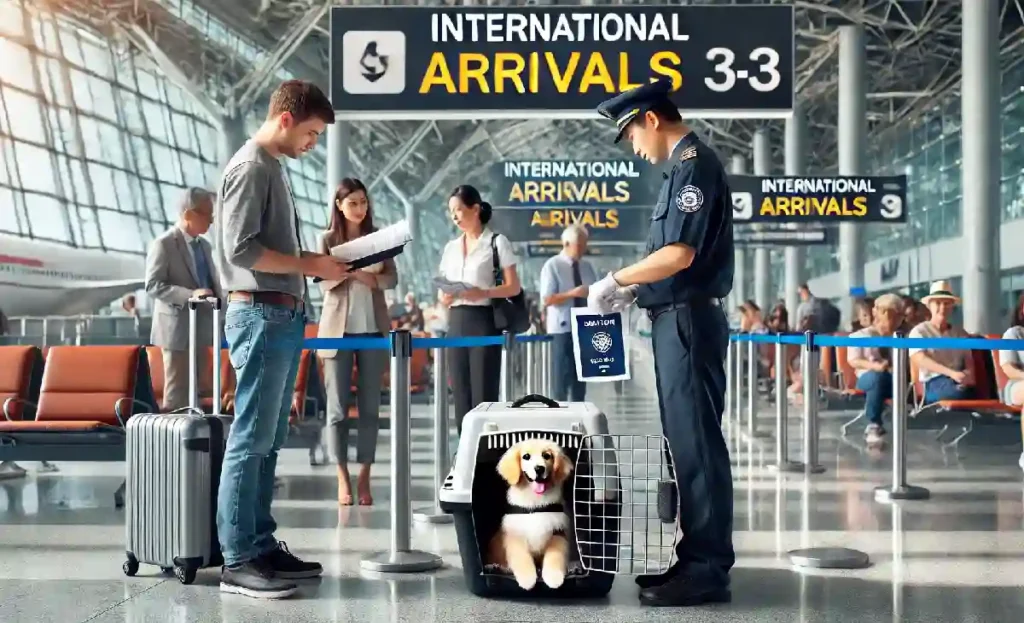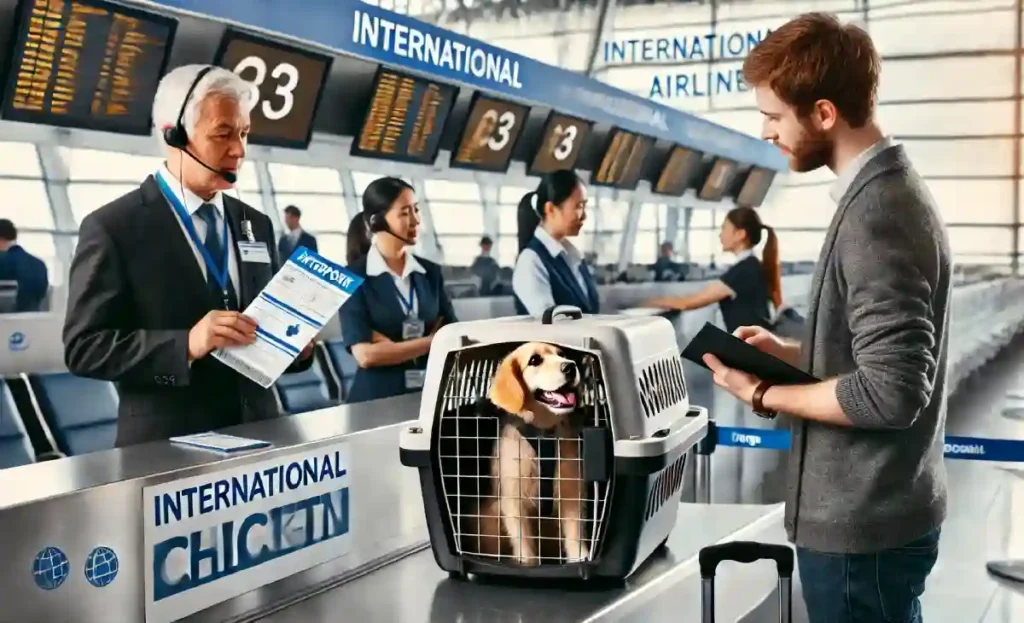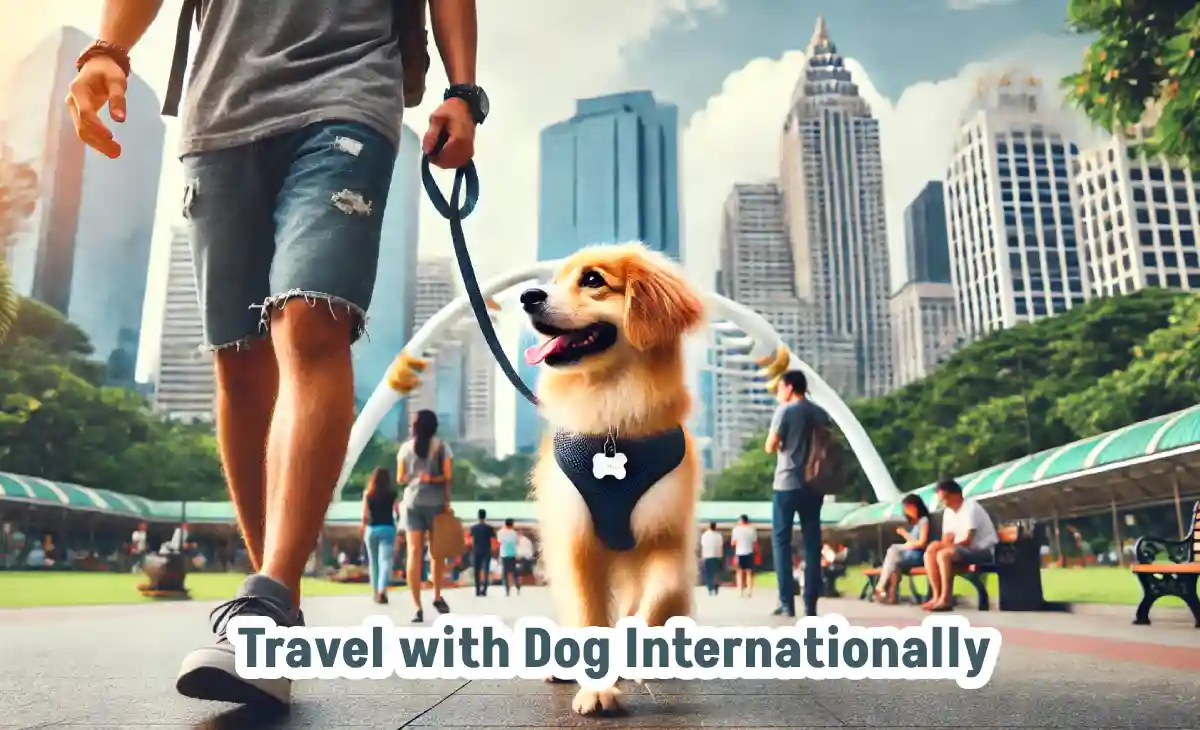Traveling internationally with your dog is an exciting adventure, but it requires careful planning and attention to detail. Did you know that more than 2 million pets fly commercially every year, according to airline industry statistics?
This guide will take you through the step-by-step process of traveling with your dog internationally, ensuring their safety, comfort, and compliance with all regulations.
Whether it’s your first time flying with a pet or you’re a seasoned traveler, this comprehensive guide will help you avoid potential hurdles and ensure a smooth journey for you and your furry companion.
Health Check and Vaccination Requirements
The first thing you need to focus on is your dog’s health. Before booking your flight, schedule an appointment with your veterinarian. A health check will confirm that your dog is fit to travel and up to date on all required vaccinations.
Most countries have strict rules about vaccinations, especially for rabies. In fact, some countries may not allow entry to pets from areas they deem high-risk for rabies. Make sure your dog is fully vaccinated and that their rabies vaccination certificate is current.
Many countries also require vaccinations for distemper, parvovirus, and other diseases, so ensure all vaccines are in line with international standards.Some countries require a waiting period after the rabies vaccination, usually ranging from 21 days to several months, depending on the destination. Make sure you plan this well in advance of your travel date.
Additional Vaccines and Health Certificates:
In addition to rabies, some countries might require other vaccines like Leptospirosis or Canine Influenza. It’s important to confirm these requirements based on your destination country. Also, an International Health Certificate issued by your veterinarian, typically within 10 days before departure, is a important document for many customs authorities.
Documentation and Permits

One of the most important steps in international pet travel is securing the right documents. Many countries require specific entry permits for pets. You should research the pet import laws of your destination as soon as you know you’ll be traveling internationally with your dog.
An import permit may be required in some countries, while others require only a health certificate. Make sure all your dog’s documentation is in order well before the flight, including:
- Vaccination records
- Microchip information
- International health certificate
- Import permit
Each country has its own regulations, so be sure to check the specific rules for your destination. Failing to meet documentation requirements could result in your dog being quarantined or even denied entry into the country.
Microchipping Your Dog:
Microchipping is mandatory for international travel in many countries. The microchip must comply with ISO standards to ensure it’s compatible with scanners used by customs officials. Ensure your dog’s microchip is registered and linked to updated contact information before you travel.
Choosing the Right Airline for Pet Travel
Not all airlines accept pets for international travel, and each has different policies regarding size, breed, and the cabin or cargo areas. Researching pet-friendly airlines is crucial when planning your trip. Many airlines offer specialized pet programs that ensure your dog’s safety and comfort.
Some airlines allow small dogs in the cabin if the dog can fit in an approved carrier under the seat. Larger dogs, however, may need to travel in the cargo hold, which can be a stressful experience for them. Therefore, it’s essential to choose an airline with a solid reputation for safely transporting pets.
Check Airline Pet Policies:
When selecting an airline, look for details like:
- Breed restrictions: Some airlines do not allow brachycephalic (short-nosed) breeds like Bulldogs or Pugs in the cargo hold due to potential breathing issues.
- Size and weight limits: Each airline has specific weight and size limits for dogs flying in the cabin or cargo.
- Carrier requirements: Airlines typically require the dog to be transported in an airline-approved pet carrier that meets specific size and safety standards.
For example, Delta Airlines has a pet-friendly travel program, but certain routes have restrictions, so always check ahead.
Preparing Your Dog for Air Travel
Getting your dog ready for a long flight takes more than just packing a crate. Preparing your dog mentally and physically for the journey is essential to ensure they remain calm and comfortable during travel.
Start preparing your dog weeks, or even months, before the trip. Make sure your dog is comfortable in their travel crate or carrier. Allow your dog to spend time inside the crate while at home, so it becomes a familiar and non-threatening space. Gradual exposure will help reduce anxiety on the day of the flight.
Consider a Pre-Flight Routine:
Feed your dog well before the flight but avoid feeding them a large meal just before travel. Exercise your dog a few hours before the trip to tire them out and make them more likely to sleep during the flight. Make sure your dog is well-hydrated, but limit water intake immediately before boarding.
Crate Training and Airline-Approved Carriers
A good travel experience starts with a good crate. Airlines have specific requirements for pet crates, especially for dogs traveling in the cargo hold. The crate should be well-ventilated, secure, and large enough for your dog to stand, turn around, and lie down comfortably.
Crate training is crucial. Introduce your dog to their crate well before the travel date. Gradually increase the time they spend inside the crate, adding familiar items like a blanket or toy to make it more inviting. Ensure the crate has a water dish attached, as this will be necessary for long flights.
Crate Specifications:
The crate should comply with the International Air Transport Association (IATA) guidelines. Look for:
- Sturdy material (no collapsible crates)
- Ventilation on all sides
- Leak-proof bottom
- Secure, but not difficult-to-open door latch
Security Checks and Airport Procedures

When you arrive at the airport, you and your dog will go through a security check. It’s important to stay calm during this process, as your dog will pick up on your emotions. Most airports will require you to remove your dog from their crate during the X-ray screening.
After you pass through security, airport personnel may also check your dog’s travel documents. Be sure you have all the required documents readily accessible in case they ask for them.
Boarding Procedures for Pets:
Airlines often have specific boarding processes for pets. Check with the airline beforehand to confirm if pets should be checked in at a special counter or regular ticket counter. Some airlines also offer pet-specific boarding zones to minimize stress on your dog.
Arrival at Your Destination
Once you’ve arrived at your destination, your dog may need to go through customs or quarantine. Customs checks can vary depending on the destination country. Some countries require your dog to be quarantined for a few days or weeks to ensure they are not carrying any diseases.
Research the quarantine policies of your destination country before traveling. This will allow you to prepare for any waiting times or special requirements.
Pet-Friendly Accommodations:
Not all accommodations accept pets, so make sure you book a pet-friendly hotel or rental in advance. Look for accommodations that provide pet amenities such as pet beds, outdoor spaces, and nearby parks for walks.
FAQs
How far in advance should I book a flight for my dog?
It’s best to book your flight at least 3-6 months in advance to ensure the airline has space for your dog and you have time to meet all vaccination and documentation requirements.
Are all dog breeds allowed to travel internationally?
Some countries and airlines restrict certain breeds, particularly brachycephalic dogs like Bulldogs and Pugs, due to breathing issues. Always check with the airline before booking.
Will my dog need to be quarantined upon arrival?
This depends on your destination. Some countries require pets to be quarantined, while others allow pets to enter without quarantine as long as they meet vaccination requirements.
Final Words
Traveling internationally with a dog is a rewarding experience but requires careful planning. From health checks to documentation and choosing the right airline, every step ensures your dog’s safety and comfort.
Prepare your dog early by getting them accustomed to their travel crate and ensure all paperwork is in order. By planning ahead and following these guidelines, you and your dog can have a smooth, enjoyable trip together.
For more details on international pet travel requirements, visit IATA’s pet travel guidelines.




